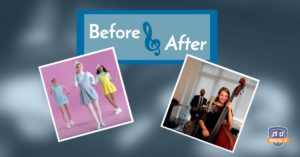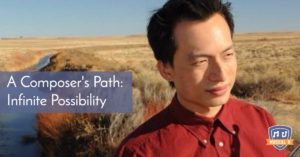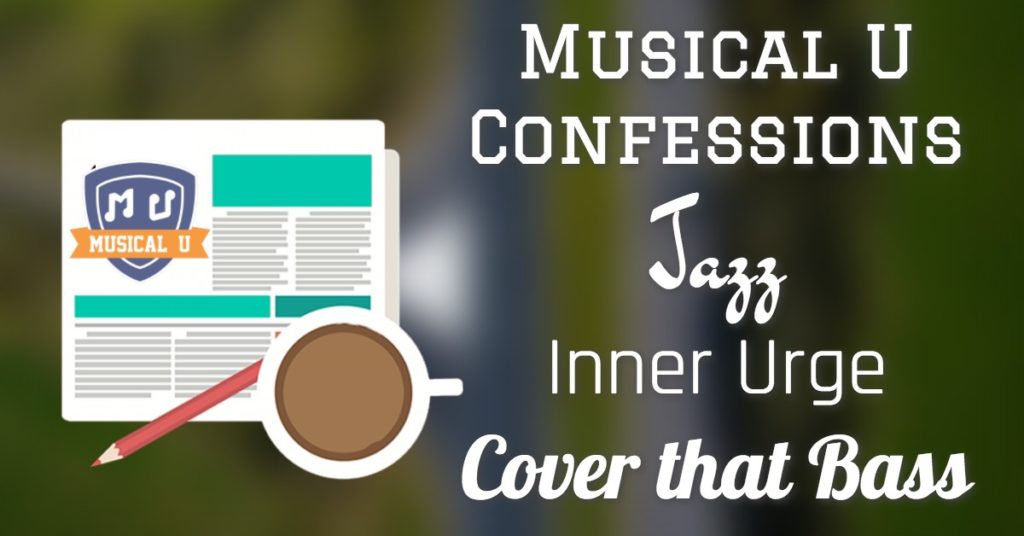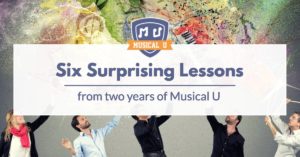To cover or not to cover?
We all have our favorite songs by other artists. Yet we want to make our own original statement of the unique music welling up inside us. With the proper approach, covers can respect the original artist yet bring out our own creativity.
Jazz musicians have made an art of reworking tunes known as “standards” constantly evolving improvisational explorations. And composer Kangyi Zhang can twist a classic Mozart theme into a Japanese shakuhachi-like meditation.
Just like a great cover adds more life and meaning to an already-great original, the second year of Musical U has added ever-expanding features and richness – and lots more members – to the firm foundation set in the first year.
Two Years of Musical U!
It’s hard to believe two years have already passed since we opened the doors at Musical U. Over that time we’ve learned a lot about what works (and doesn’t!) in musicality training. This week to mark the 2-year anniversary, we shared some of the surprising lessons we’ve learned which just might help you in your own training.
Thinking of joining Musical U? Don’t miss our 2-year anniversary offer!
Genre Bender
 Changing genre is a first step for many cover artists. And that switch can really make a statement. For example, what would happen if a real jazz bass player got a hold of Meghan Trainor’s “All About That Bass”? Find out in Before and After: Covering “All About That Bass”.
Changing genre is a first step for many cover artists. And that switch can really make a statement. For example, what would happen if a real jazz bass player got a hold of Meghan Trainor’s “All About That Bass”? Find out in Before and After: Covering “All About That Bass”.
Making a cover song your own requires a certain amount of finesse and a whole lot of fun. Sonic Bids blog has five easy ways that you can spice up your own versions of popular tunes.
Believe it or not, you can actually make money recording cover songs. But, there are certain legalities that must be considered to make sure that you are doing it right and paying royalties. VoiceCouncil brings us the behind-the-scenes look into how Leo Moracchioli does it for his YouTube channel. Check out Leo’s unique heavy metal version of Adele’s “Hello”:
With YouTube, there are so many great cover songs that are released on a daily basis. So, how can you make your version so unique that people will be drawn to it? Singer’s Secrets talks about how to make your cover song stand out from the crowd.
Jazz
While much original jazz has been written, learning to cover the essential songs known as “standards” is still the backbone of jazz education and performance. Drawing from regional African-American styles and born in the streets of New Orleans, jazz grew through phases as dance and popular music into a high concert art worldwide.
 While it may not top the charts today, jazz has it’s fingers in nearly every popular music style on the planet. Learn more about this gift to world music when you Open Your Ears to Jazz.
While it may not top the charts today, jazz has it’s fingers in nearly every popular music style on the planet. Learn more about this gift to world music when you Open Your Ears to Jazz.
Lyrics and vocals are an essential component in the history of jazz and tell the story the composers. Songstuff talks about the process of writing jazz lyrics and the story of how one song came together.
While the main sub-genres of jazz were discussed in the article, the total depth of jazz music is profound. This exploration of jazz from Jazz Music Archives goes into the long and amazing history of jazz and how it has progressed throughout the years.
Adventurous jazz musicians cracked open Western harmony in a whole new way – and audiences ate it up! Watch Free Jazz Lessons rack up some cool chord progression tips for your own jazz exploration.
Inner Urge
What do you do when you’re not covering someone else’s music? Write your own! In A Composer’s Path, Kangyi Zhang described how his inner urge to compose emerged from his curiosity about the inner motivations of the composers he was covering.
 Kangyi’s earlier musical experiences were as a Chinese dizi flute player. His flutist’s journey brought him to the Western flute, and to modern Western classical music and contemporary electronic music. Find out how Kangyi discovered his true musical voice in A Composer’s Path, Part 2: Infinite Possibility.
Kangyi’s earlier musical experiences were as a Chinese dizi flute player. His flutist’s journey brought him to the Western flute, and to modern Western classical music and contemporary electronic music. Find out how Kangyi discovered his true musical voice in A Composer’s Path, Part 2: Infinite Possibility.
Kangyi talked about how it was difficult to transition to modernists like Schoenberg having been brought up in the Chinese tonal music system. So, how is Chinese music different from Western music? The Mixolydian Blog talks about the fascinating origins of Chinese music and how theorists see meaning behind each note.
For many composers, it can be difficult to find people to perform their music, which led Kangyi to embrace digital platforms like Pro Tools. But, as a performer, can you connect with the composer that wrote a piece that you are performing? James Grant Music shares the 6 Really Cool Reasons for Contacting Living Composers When You Perform Their Music.
Ear training was an essential part of Kangyi’s music schooling, but he describes it as an endless journey. Hit Music Theory has three easy steps that you can take to start improving your own skills.
We’ve got you covered…
With all the creativity going into cover tunes today, perhaps it’s time for a new term: “original covers” perhaps? Jazz, modern classical, heavy metal… whatever the style or genre, the more musical skills you have built, the more you can bring your vision to fruition.
We’re so happy that – in your pursuit of greater musicality – you’ve joined us here on Musical U, and look forward to seeing you again soon!








